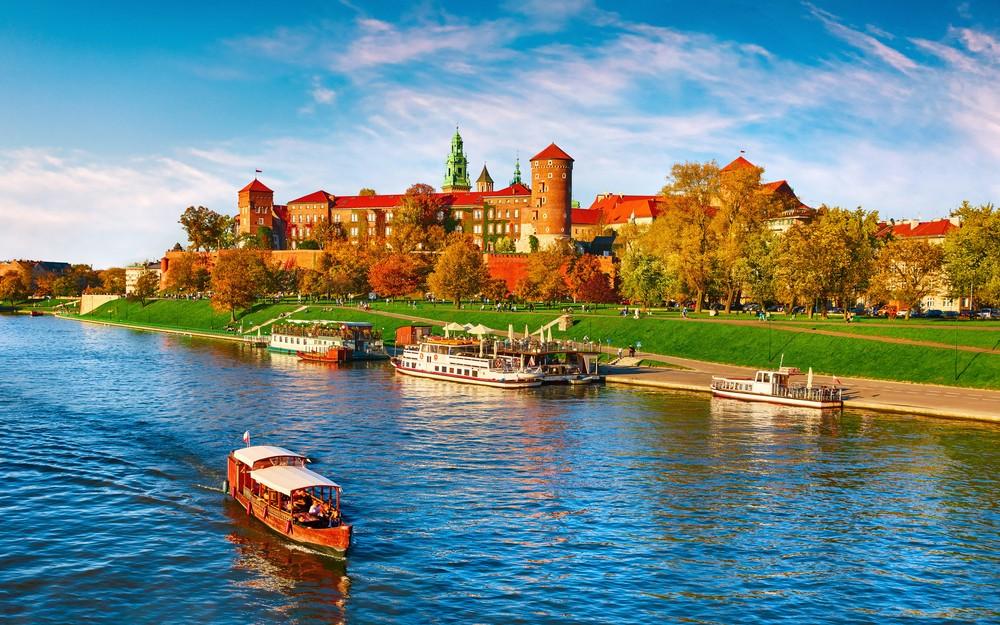Where in Europe can you find a city with no less than 5,500 houses that are protected by a monument? The answer can be found in Poland – in Krakow! Trips to this tradition-conscious country lead to a region on Germany’s doorstep and to a diverse nature. Sometimes it is wild and unspoilt, then again lovely. And it harmonizes with the historic metropolises in a country that is characterized by the religiosity of its people and lives on the memory of a long struggle for freedom. Poland is the largest of the European agricultural countries with tiny farms that are hardly profitable. But a new idea developed in the country that gives tourism a chance. Since then, many a farmer has opened his homestead to holidaymakers.

A wild world even spreads in abundance here and there in Poland. It is a charming wilderness with centuries-old oaks – for example, in the reserve of Bialowieza. Some of these trees reach astonishing proportions and heights, and among them graze the last of the continent’s free-living bison. Anyone who hikes through these quiet forests as a holidaymaker hears unusual sounds of nature and smells that they can hardly describe. The four Polish national parks in the northeast are the green lungs of the country and stretch up to the border with Lithuania. Storks find their food in the meadows, and with a little luck you can even observe a moose from the observation towers along the hiking trails.
It is said of the youth in Poland that they were born in the East and at home in the West. Many of them have acquired the German language after completing their studies and are very open-minded towards holidaymakers in their country. The pubs, discotheques and restaurants in Poland have largely given themselves a modern touch, and the capital Warsaw is one of the rising stars among European metropolises. Hotel skyscrapers grow into the sky there, and if you want to see Warsaw from above, you should go to the observation deck of the 234-meter-high Palace of Culture.

Krakow, which was the real centre of power in Poland until 1596, is completely different. In this city, a thousand-year history is alive and shows itself in a golden-shining splendor. Many see Krakow as a mixture of Jewish wit, Viennese humour and a pinch of oriental charm. In St. Mary’s Church, the high altar by the German carver genius Veit Stoss is a real eye-catcher, and the historic market square has always been a meeting place for the people of this city. In the famous Café Novorolski, the tradition of a coffee house is maintained, and the people of Krakow speak of it somewhat irreverently as a “cake temple”.
Krakow’s unique atmosphere has been attracting artists and students alike for many years. This is also because this town was never destroyed and the Wawel Castle was preserved, as were the almost one hundred monasteries and churches. A special flair spreads in the mountains of the Sudetes, which are crisscrossed by a network of hiking trails and attract skiers in winter. Gerhart Hauptmann lived here. “The Weavers” were created there. The Museum of the Hauptmann Brothers opens its doors in Szklarska Poreba, and a German-Polish meeting place has been established in the Gerhart Hauptmann House in Jagniatkow.
Although historic Wrocław has Polish, Bohemian and Prussian roots, it is mainly Silesian. The Oder flood of 1997 hit the city deeply, but it has since spruced itself up again. The so-called “Centennial Hall” by architect Max Berg fascinates with the largest free-floating dome in the world, and the old town with the cathedral island in the Oder is a listed building.
Travel information Poland
| Capital | Warsaw |
|---|---|
| Form of government | parliamentary republic parliamentary democracy |
| Currency | Złoty (PLN) |
| Area | approx. 312,679 km² |
| Population | approx. 38,427,000 (2016) |
| Languages | Polish |
| Electricity grid | 130 volts, 50 Hz |
| Area code | +48 |
| Time zone | UTC+1 CET UTC+2 CEST (March to October) |


